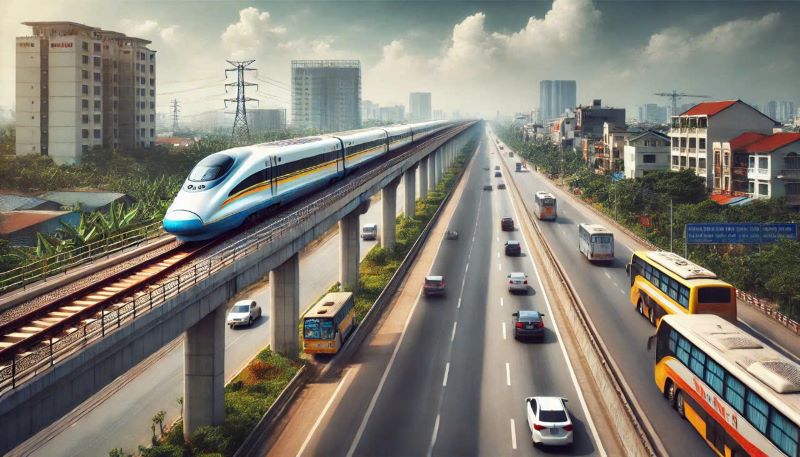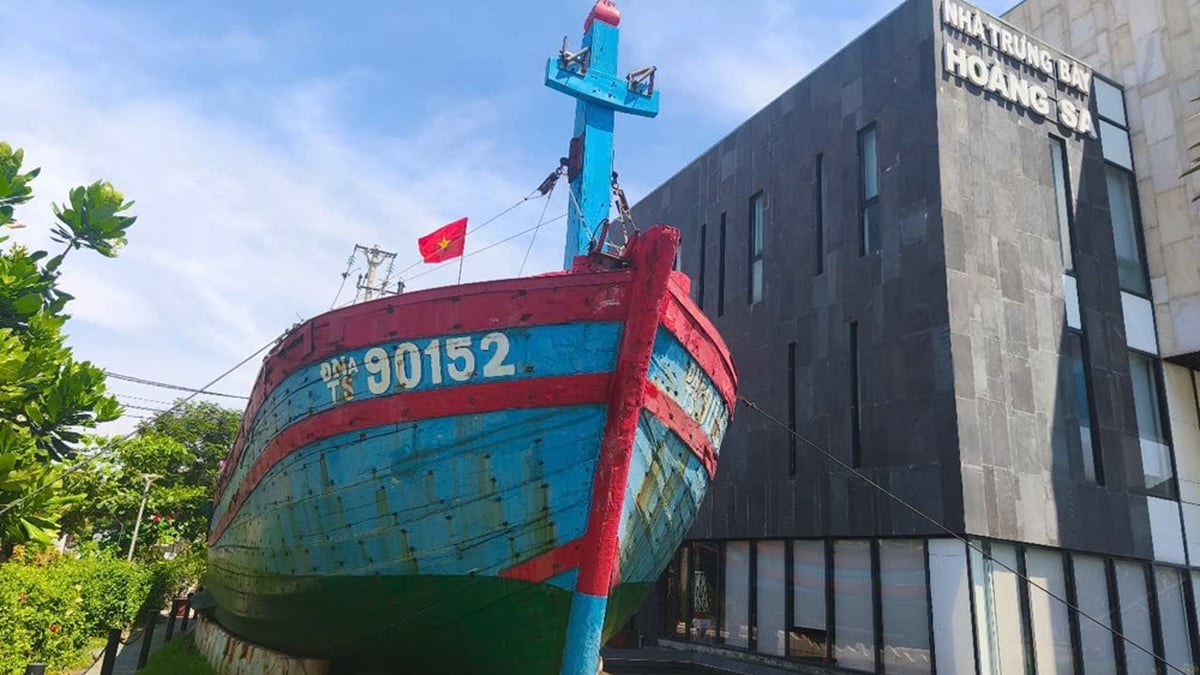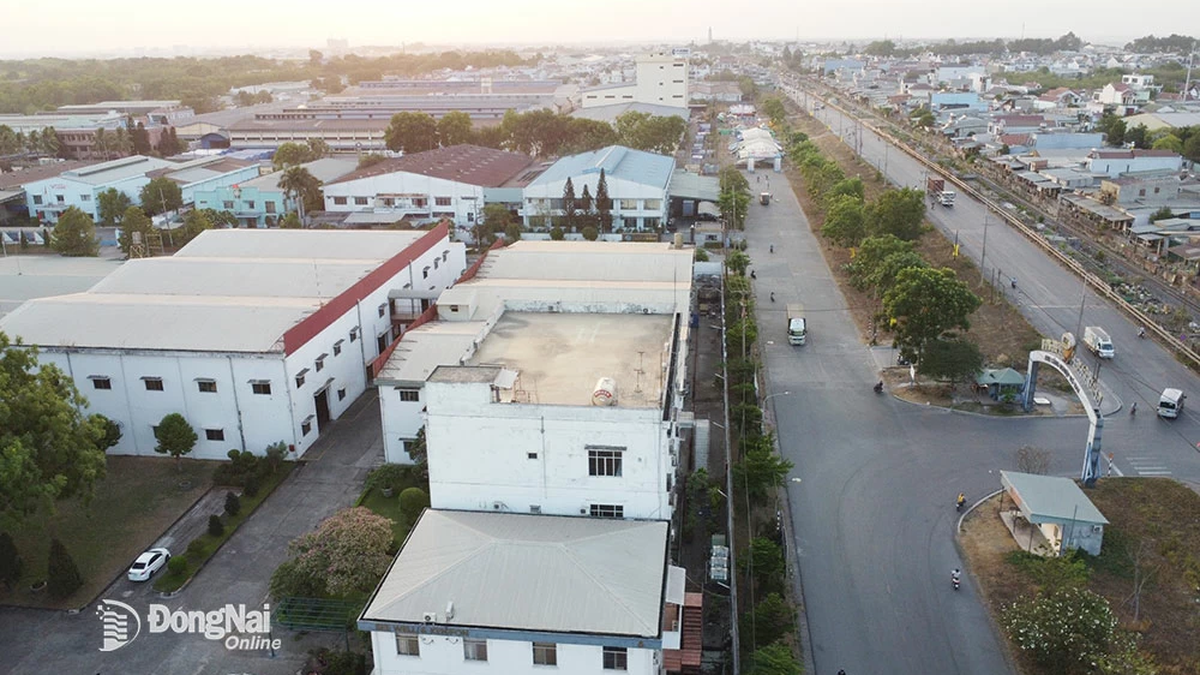Clarifying the proposed route and stations of the North-South high-speed railway
In addition to the 23 passenger stations on the high-speed railway line on the North-South axis that have been identified, the Feasibility Study Report will consider the locations of potential stations when there is a large enough transport demand.
 |
| The high-speed railway route was studied and selected by the Consultant as the “shortest possible”. (Photo: AI). |
This is one of the contents in the official dispatch that the Ministry of Transport has just sent to the Ministry of Planning and Investment; members of the State Appraisal Council; and the interdisciplinary appraisal expert team to explain and accept the opinions of the State Appraisal Council on the Pre-Feasibility Study Report of the high-speed railway project on the North-South axis (second meeting).
The “shortest possible” high-speed rail route
One of the contents clarified by the Ministry of Transport is the route direction and the selection of station arrangement on the high-speed railway line on the North-South axis.
According to the Ministry of Transport, the high-speed railway route was studied and selected by the Consultant to be "as short as possible" and meet the following principles: consistent with national sector planning and local planning; meeting requirements on control points; shortest route length between stations; meeting technical requirements (maximum slope, horizontal curve radius), creating convenience for passengers.
In addition, the route must avoid passing through areas sensitive to the natural environment, social environment, relic sites, scenic spots, and national defense land; limit the volume of land clearance, avoid densely populated areas, minimize impacts on existing structures; ensure connectivity to the East-West corridor, and railway lines connecting China, Laos, and Cambodia.
On that basis, since 2018, the Ministry of Transport has developed 3 route options with the support of international consultants to analyze, evaluate and reach agreement with localities.
In which, the selected route option has been agreed upon by 20/20 provinces and cities with high-speed railway lines passing through on the principle of being as straight as possible.
Implementing the opinion of the State Appraisal Council at the first meeting, the investor and consultant coordinated with localities to review the route through the area. The Ministry of Transport sent a document to solicit opinions and held a meeting with the People's Committees of provinces/cities on the route plan. The result: 18/20 localities sent a document requesting to keep the route as in the Pre-Feasibility Study Report; 2/20 localities proposed to adjust some locations compared to the route in the Pre-Feasibility Study Report.
The Investor has directed the Consultant to receive and complete the Project documents. The result after reviewing the total length of the route is reduced from 1,545 km to 1,541 km.
Thus, the route has been studied according to the principle of "straightest possible", the curves have been audited to ensure safety and smoothness for passengers; at the same time, accepting the direction of the Government Standing Committee in Notice No. 458/TB-VPCP dated October 6, 2024, the Ministry of Transport has sent an explanatory document to the State Appraisal Council.
Up to now, the project route has been updated by localities into the provincial planning and the planning has been approved by the Prime Minister .
“In the Feasibility Study Report step, the Ministry of Transport will continue to direct the Consultant to review and study adjustments to ensure the most optimal route,” said the Ministry of Transport.
For passenger stations, the high-speed railway line arranges 23 passenger stations according to the following principles: suitable to current conditions and local development planning; located in the economic and political center of localities or areas near urban centers, planning areas with new development potential, effectively exploiting land resources; ensuring convenient connection with the public transport system; ensuring effective exploitation of infrastructure and vehicles.
The Ministry of Transport said that, accepting the proposal of Binh Thuan province, Muong Man station will move to a new location about 4 km north of the old location (Phan Thiet station).
Determine the size of the stations
In addition, taking into account the opinions of the State Appraisal Council, in the step of preparing the Feasibility Study Report, the locations of potential stations will be considered when the locality forms and develops urban areas with large enough population and transportation demand, the distance between stations ensures technical requirements for exploitation, and the locality will be assigned to take the lead in calling for investment in station areas under the PPP method.
Regarding cargo stations, taking into account the opinions of the State Appraisal Council, the Ministry of Transport has directed consultants to review and propose the construction of 5 cargo stations at major cargo hubs connecting with Hanoi, Ho Chi Minh City, major seaports, coastal economic zones and connecting the railway system to serve international intermodal transport, facilitating logistics for national defense and security, meeting the goals and requirements of combining economy with national defense and security, and being able to transport goods when necessary.
Regarding the location of the cargo station in Hanoi area, accepting the proposal of Hanoi People's Committee, the cargo station in Ngoc Hoi area will be moved to Thuong Tin.
In addition, in the Feasibility Study Report preparation step, the Ministry of Transport will direct investors and consultants to continue to coordinate with localities to review and adjust route directions and station locations (if any), especially locations with advantages connecting to major traffic hubs and economic zones, including the section through Nam Dinh province.
Regarding the scale of stations, the Ministry of Transport said that in the Pre-Feasibility Study Report, it was determined that each passenger station location has a planned development space of 250 - 300 hectares (except Thu Thiem station), including 3 functional areas, in which the area directly serving passenger pick-up and drop-off, parking lot has an area of 6 - 8 hectares, similar to the scale of railway stations of railway lines in China, Indonesia, Korea, Japan...; the service and commercial area has an area of 10 - 15 hectares; the urban service area has an area of 250 - 300 hectares.
The Ministry of Transport said that the project will only use public investment capital to invest in functional areas directly serving to welcome and see off guests.
The part serving commercial purposes, TOD development will be called for by the locality to attract investors and depending on specific conditions, the scale will be determined appropriately, encouraging large-scale planning.
As for Ngoc Hoi station, which is a railway hub in Hanoi, integrated with urban and national railways, it is planned to be about 250 hectares; Thu Thiem station, integrated with urban railways, is expected to be about 17 hectares.
For freight stations, each freight station has a scale of about 24.5 hectares. In the Feasibility Study Report preparation step, the Ministry of Transport directs the investor and the Consultant to review and study the proposed locations and specific scales of suitable stations to ensure that all requirements are met: central station, station square and multimodal connection works.




















































![[Maritime News] More than 80% of global container shipping capacity is in the hands of MSC and major shipping alliances](https://vphoto.vietnam.vn/thumb/402x226/vietnam/resource/IMAGE/2025/7/16/6b4d586c984b4cbf8c5680352b9eaeb0)












































Comment (0)